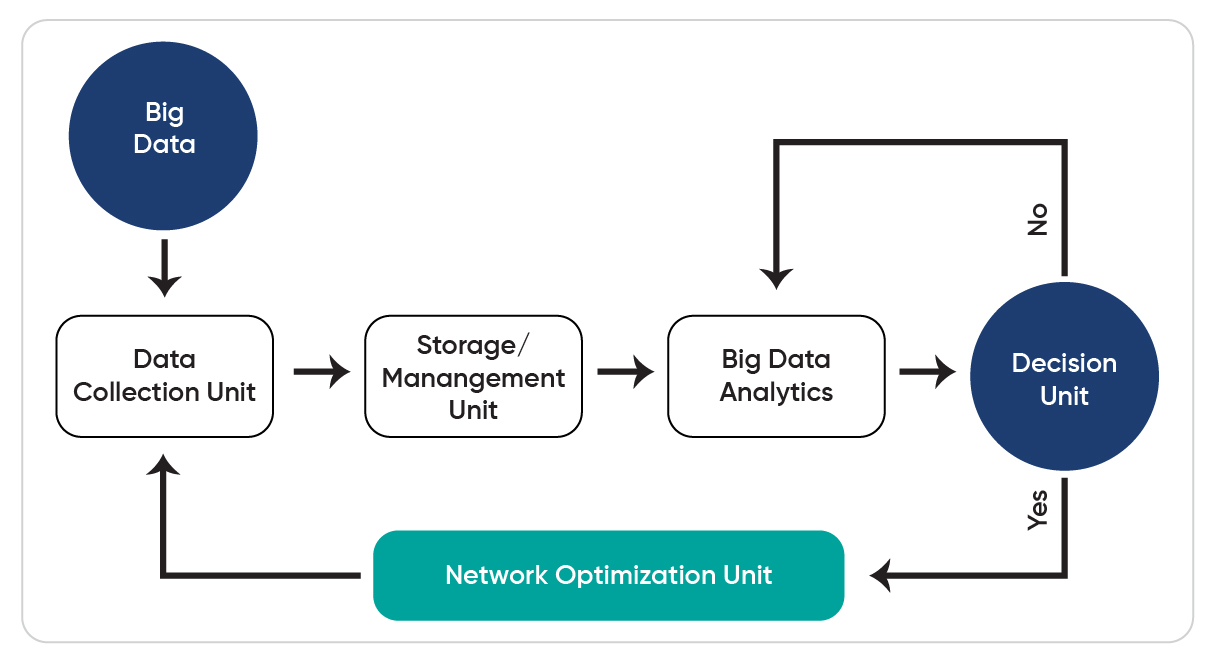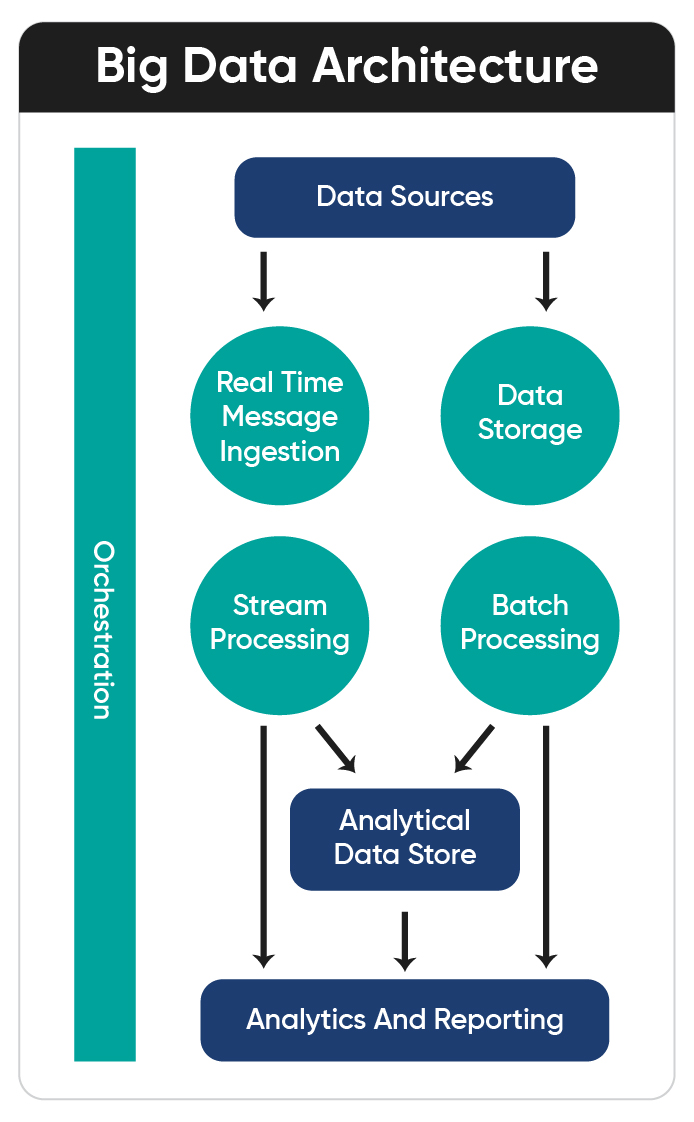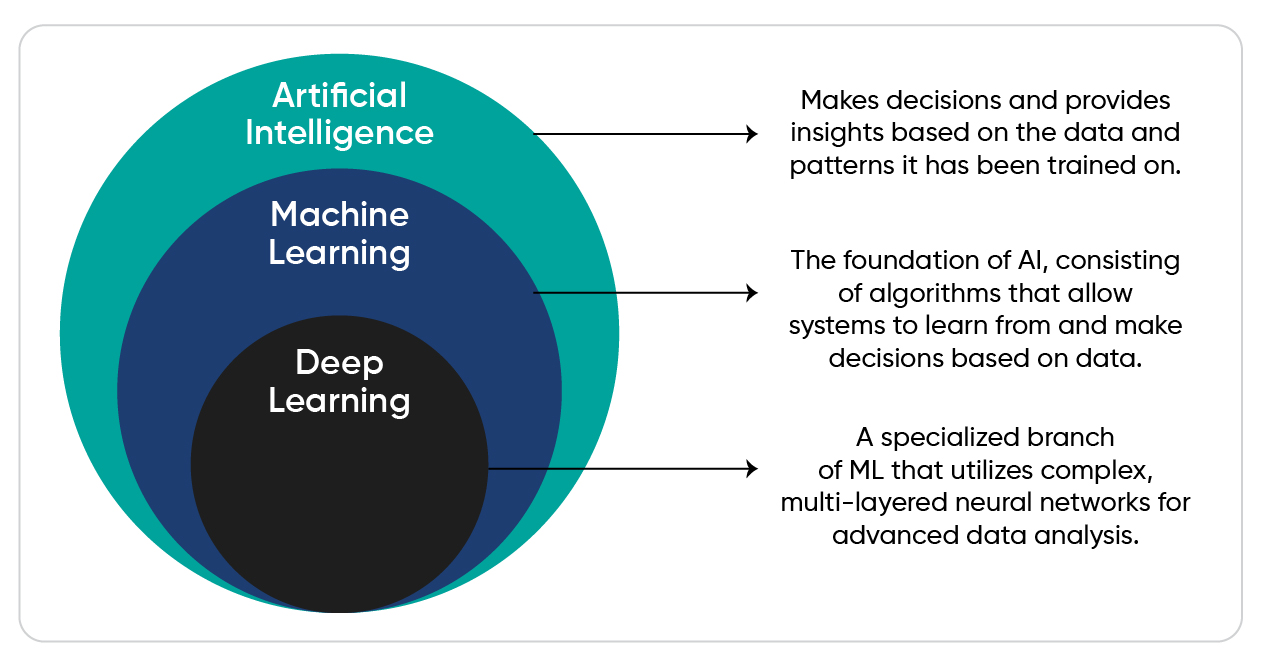
The digital asset landscape has undergone a transformative evolution, fueled by advancements in blockchain technology and the proliferation of decentralized finance (DeFi). One of the most significant developments in this space is the rise of on-chain analytics, a powerful tool that leverages big data to provide unparalleled insights into blockchain activities. This blog explores the cutting-edge use of on-chain analytics in the digital asset space, focusing on how big data is transforming educational resources for investors. We will discuss advanced techniques for analyzing blockchain data, discuss how these insights are being utilized to inform trading and investment strategies, and examine the future potential of on-chain data in shaping market education.
The Emergence of On-Chain Analytics
On-chain analytics refers to the process of analyzing blockchain data to derive actionable insights. Unlike traditional financial data, which is often siloed and opaque, blockchain data is publicly available and immutable, providing a rich source of information for analysts and investors. This transparency allows for a comprehensive view of market activities, including transaction histories, wallet balances, and smart contract interactions.
The importance of on-chain analytics has grown in parallel with the expansion of the blockchain ecosystem. As more assets, protocols, and users engage with blockchain networks, the volume of data generated has skyrocketed. This explosion of data presents both opportunities and challenges for market participants. On one hand, it provides a wealth of information that can be used to make informed decisions. On the other hand, the sheer volume and complexity of this data can be overwhelming, requiring sophisticated tools and techniques to analyze effectively.

Big Data in Blockchain: Transforming Education for Investors
Big data has revolutionized many industries, and the digital asset space is no exception. In the context of blockchain, big data refers to the massive amounts of data generated by transactions, smart contracts, and network activities. This data can be mined and analyzed to uncover patterns, trends, and anomalies that would otherwise go unnoticed.
For investors, big data is a game-changer. It provides the ability to track market sentiment, monitor the health of blockchain networks, and identify emerging trends. This level of insight was previously unattainable, allowing investors to make more informed decisions and reduce risk.
Educational resources for investors have also benefited from the integration of big data. Traditional investment education often relies on historical data and theoretical models, which may not fully capture the dynamic nature of digital assets. By contrast, on-chain analytics offers real-time data and actionable insights, enabling investors to learn from current market conditions and adjust their strategies accordingly.
Advanced Techniques for Analyzing Blockchain Data
Analyzing blockchain data requires specialized tools and techniques due to the unique nature of this data. Traditional data analysis methods may not be applicable or sufficient for processing the vast and complex datasets generated by blockchain networks. Here, we explore some of the advanced techniques used in on-chain analytics:

1. Network Analysis
Network analysis is a powerful technique used to understand the relationships and interactions within a blockchain network. By mapping out the connections between different entities, such as wallets and smart contracts, analysts can identify key players, detect clusters of activity, and assess the overall health of the network.
For example, network analysis can reveal the concentration of assets within certain wallets, which may indicate potential market manipulation or the presence of whale investors. It can also identify the flow of assets between different networks, providing insights into cross-chain activities and interoperability.
2. Transaction Flow Analysis
Transaction flow analysis involves tracking the movement of assets across the blockchain. This technique can be used to monitor large transactions, identify patterns of behavior, and detect suspicious activities. By analyzing the flow of transactions, investors can gain insights into market sentiment and predict potential price movements.
For instance, a sudden influx of large transactions to an exchange may signal an impending sell-off, while a steady accumulation of assets in a particular wallet could indicate bullish sentiment. Transaction flow analysis can also be used to trace the origin and destination of assets, providing transparency and accountability in the market.
3. Machine Learning and AI
Machine learning and artificial intelligence (AI) have become increasingly important in on-chain analytics. These technologies can be used to process and analyze large datasets, identify patterns, and make predictions. By training algorithms on historical data, machine learning models can forecast future market trends and identify potential risks.

AI-driven analytics platforms can also automate the analysis process, providing real-time insights and recommendations to investors. For example, AI can be used to detect anomalies in transaction patterns, flagging potential security threats or fraudulent activities. This level of automation is particularly valuable in the fast-paced digital asset market, where timely decision-making is crucial.
4. Sentiment Analysis
Sentiment analysis is a technique used to gauge market sentiment by analyzing social media posts, news articles, and other online content. In the context of blockchain, sentiment analysis can be applied to assess the mood of the market and predict price movements.

By analyzing the sentiment surrounding specific assets or projects, investors can gain insights into market trends and potential opportunities. For example, positive sentiment around a particular project may indicate growing interest and potential for price appreciation, while negative sentiment could signal an impending downturn.
5. Predictive Analytics
Predictive analytics involves using historical data to make forecasts about future events. In the digital asset space, predictive analytics can be used to anticipate price movements, identify market cycles, and assess the impact of external factors on the market.
For instance, predictive models can be used to forecast the price of Bitcoin based on historical price data, transaction volumes, and macroeconomic indicators. By leveraging predictive analytics, investors can make more informed decisions and optimize their investment strategies.
6. Cross-Chain Analysis
As the blockchain ecosystem grows more interconnected, cross-chain analysis has become increasingly important. This technique involves examining data across multiple blockchain networks to understand how they interact with each other. Cross-chain analysis is crucial for assessing the flow of assets between different blockchains, especially with the rise of cross-chain bridges and decentralized exchanges (DEXs) that facilitate interoperability.
For instance, cross-chain analysis can track the movement of tokens from one blockchain to another, helping investors identify where liquidity is being transferred or where arbitrage opportunities might exist. It also aids in understanding the flow of assets in the broader DeFi ecosystem, providing a comprehensive view of market dynamics across multiple networks.

7. Behavioral Analytics
Behavioral analytics focuses on understanding the actions and patterns of blockchain users. By analyzing user behavior on the blockchain, such as transaction frequency, asset transfers, and interactions with smart contracts, this technique helps identify trends and predict future actions.
For example, behavioral analytics can detect patterns in how certain user groups interact with DeFi protocols, such as the timing of their investments or the types of assets they favor. This information can be invaluable for predicting market movements, identifying influential market participants, or understanding the adoption of new technologies.
8. Anomaly Detection
Anomaly detection is a technique used to identify unusual patterns in blockchain data that may indicate fraudulent activity, security breaches, or market manipulation. By applying statistical models and machine learning algorithms, analysts can detect anomalies in transaction volumes, asset flows, or network activity.
For instance, a sudden spike in transaction volume or an unusual concentration of assets in a single wallet could be flagged as an anomaly, prompting further investigation. Anomaly detection is crucial for maintaining the security and integrity of blockchain networks, as it helps to identify and mitigate risks before they escalate.

9. Sentiment-Driven Predictive Modeling
While sentiment analysis was previously discussed, sentiment-driven predictive modeling takes this a step further by combining sentiment data with other on-chain metrics to create predictive models. This technique can forecast market movements based on how sentiment changes in response to on-chain events, such as large transactions, new protocol launches, or regulatory news.
For example, a predictive model could analyze social media sentiment around a new DeFi project and correlate it with on-chain data like token transfers and user engagement. By identifying patterns between sentiment shifts and market responses, investors can anticipate price movements and make strategic decisions.
10. Privacy-Preserving Analytics
With growing concerns about privacy, especially in relation to blockchain data, privacy-preserving analytics has emerged as a vital technique. This involves analyzing blockchain data without compromising the privacy of the individuals involved. Techniques such as zero-knowledge proofs (ZKPs) and homomorphic encryption allow for the analysis of encrypted data, ensuring that sensitive information remains confidential while still deriving valuable insights.
For instance, privacy-preserving analytics can be used to study transaction patterns or asset flows without revealing the identities of the participants. This is particularly important in regulatory environments where compliance with privacy laws is essential, yet market transparency and insight are still required.
11. Tokenomics Analysis
Tokenomics, or the economics of tokenized ecosystems, is a critical aspect of blockchain projects. Tokenomics analysis involves examining the supply and demand dynamics, distribution models, and incentive structures of blockchain tokens. By analyzing these factors, investors can assess the long-term viability and growth potential of a project.

For example, a tokenomics analysis might look at the inflation rate of a cryptocurrency, the distribution schedule of tokens to stakeholders, and the utility of the token within its ecosystem. Understanding these dynamics helps investors gauge the potential for price appreciation, network adoption, and the overall sustainability of the project.
12. Compliance and Regulatory Analytics
As blockchain technology becomes more integrated with traditional financial systems, compliance and regulatory analytics have become increasingly important. This technique involves analyzing blockchain data to ensure compliance with legal and regulatory standards, such as anti-money laundering (AML) and know-your-customer (KYC) requirements.
For instance, compliance analytics can track the flow of funds through the blockchain to identify suspicious activities that might indicate money laundering or other illicit behaviors. This data can be used by financial institutions and regulators to monitor compliance and enforce regulations in the digital asset space.
13. Governance Analysis
Governance is a key aspect of many blockchain networks, particularly in decentralized autonomous organizations (DAOs) and other community-driven projects. Governance analysis involves examining the decision-making processes on the blockchain, including voting patterns, proposal outcomes, and stakeholder participation.

For example, governance analysis can reveal the influence of different stakeholders in the voting process, the level of community engagement, and the impact of governance decisions on the network’s development. This analysis helps investors understand the power dynamics within a project and assess the effectiveness of its governance model.
14. Liquidity Analysis
Liquidity is a critical factor in the health and stability of digital asset markets. Liquidity analysis involves examining the availability of assets for trading, the depth of order books, and the spread between buy and sell orders. By understanding liquidity dynamics, investors can assess the ease with which they can enter or exit positions without significantly impacting the market price.
For example, liquidity analysis can highlight the liquidity providers in decentralized finance (DeFi) pools, the concentration of liquidity in certain exchanges, and the impact of liquidity on price stability. This information is crucial for managing trading strategies and minimizing slippage in volatile markets.
15. Smart Contract Auditing
Smart contracts are the backbone of many blockchain applications, and ensuring their security and functionality is paramount. Smart contract auditing involves analyzing the code of smart contracts to identify vulnerabilities, bugs, or inefficiencies that could lead to security breaches or operational failures.

For instance, a smart contract audit might involve a thorough review of the contract’s logic, checking for potential exploits, and verifying that it behaves as intended under various conditions. This analysis helps prevent costly errors, enhances security, and builds trust among users and investors.
How On-Chain Insights Inform Trading and Investment Strategies
The insights gained from on-chain analytics are invaluable for traders and investors. By providing a detailed view of market activities and trends, on-chain data can inform a wide range of trading and investment strategies. Here, we explore some of the ways in which on-chain insights are being used in the digital asset space:
1. Market Timing
One of the most critical aspects of trading is timing. On-chain analytics can help traders identify optimal entry and exit points by analyzing market trends and sentiment. For example, by monitoring the flow of assets into and out of exchanges, traders can anticipate price movements and adjust their positions accordingly.
On-chain data can also be used to identify accumulation and distribution phases in the market. During accumulation phases, large investors (often referred to as “whales”) accumulate assets at low prices, while during distribution phases, they sell off their holdings at higher prices. By identifying these phases, traders can align their strategies with the actions of market movers.
2. Risk Management
Risk management is a crucial component of any investment strategy. On-chain analytics can provide valuable insights into market risks, allowing investors to make more informed decisions and mitigate potential losses. For example, by analyzing the concentration of assets in specific wallets, investors can assess the risk of market manipulation or sudden price swings.

On-chain data can also be used to monitor the health of blockchain networks and identify potential vulnerabilities. For instance, a sudden increase in transaction fees or a drop in network activity may indicate network congestion or security issues. By staying informed about these risks, investors can take proactive measures to protect their investments.
3. Portfolio Diversification
Diversification is a key strategy for managing risk in any investment portfolio. On-chain analytics can help investors identify opportunities for diversification by analyzing the performance and correlation of different assets. By understanding the relationships between various assets, investors can build a more balanced and resilient portfolio.
For example, on-chain data can reveal correlations between the prices of different cryptocurrencies, allowing investors to identify assets that may serve as hedges against market volatility. On-chain analytics can also be used to assess the performance of DeFi protocols and identify emerging assets with strong growth potential.
4. Arbitrage Opportunities
Arbitrage involves taking advantage of price differences between different markets or exchanges. On-chain analytics can help traders identify arbitrage opportunities by analyzing price discrepancies across multiple platforms. By executing trades that capitalize on these discrepancies, traders can generate profits with minimal risk.

For example, on-chain data can reveal price differences between decentralized exchanges (DEXs) and centralized exchanges (CEXs). By monitoring these discrepancies in real-time, traders can quickly execute arbitrage trades and lock in profits.
5. Long-Term Investment Strategies
While on-chain analytics is often associated with short-term trading strategies, it can also inform long-term investment decisions. By analyzing historical data and market trends, investors can identify assets with strong fundamentals and long-term growth potential.
For instance, on-chain data can be used to assess the adoption and usage of specific blockchain networks. Networks with high transaction volumes, active developer communities, and strong network effects are more likely to succeed in the long term. By focusing on these metrics, long-term investors can identify assets that are well-positioned for future growth.
The Future Potential of On-Chain Data in Market Education
As the digital asset space continues to evolve, the role of on-chain data in market education is set to grow. The transparency and accessibility of blockchain data make it a valuable resource for educating both novice and experienced investors. Here, we explore some of the future potential of on-chain data in shaping market education:
1. Real-Time Educational Tools
One of the most exciting developments in on-chain analytics is the potential for real-time educational tools. These tools could provide investors with live updates on market conditions, allowing them to learn from current events and adjust their strategies in real-time.

For example, a real-time dashboard could display key on-chain metrics, such as transaction volumes, wallet balances, and network activity. Investors could use this information to monitor market trends, identify opportunities, and make informed decisions. By integrating on-chain data into educational platforms, investors can gain a deeper understanding of the market and develop more effective strategies.
2. Personalized Learning Experiences
On-chain data can also be used to create personalized learning experiences for investors. By analyzing an individual’s trading history and preferences, educational platforms can provide tailored recommendations and insights. This level of personalization can help investors build confidence and develop strategies that align with their goals.
For instance, a personalized learning platform could analyze an investor’s portfolio and provide suggestions for diversification based on on-chain data. It could also offer insights into market trends and potential risks, helping investors make informed decisions and achieve their financial objectives.
3. Data-Driven Research and Analysis
The future of on-chain analytics will likely see an increased focus on data-driven research and analysis. As more data becomes available, researchers and analysts will be able to conduct more in-depth studies of market trends, asset performance, and investor behavior. This research will contribute to a deeper understanding of the digital asset space and inform the development of new strategies and tools.
For example, researchers could use on-chain data to study the impact of external events on market performance, such as regulatory changes or technological advancements. By analyzing these factors, they can identify patterns and trends that can inform future investment strategies.
4. Enhanced Transparency and Accountability
On-chain analytics can also play a crucial role in enhancing transparency and accountability in the digital asset space. As the market continues to grow, there is an increasing need for reliable and transparent information. On-chain data provides a verifiable record of all transactions and activities on the blockchain, making it an invaluable resource for ensuring transparency and trust.
For instance, on-chain analytics can be used to verify the legitimacy of projects and assess their compliance with regulatory requirements. This level of transparency can help build trust among investors and reduce the risk of fraud and manipulation in the market.
5. Bridging the Gap Between Traditional Finance and Digital Assets
As on-chain analytics continues to evolve, it has the potential to bridge the gap between traditional finance and digital assets. By providing insights into the performance and behavior of digital assets, on-chain analytics can help traditional investors better understand and navigate the digital asset space.
For example, traditional financial institutions could use on-chain data to assess the risk and potential of digital assets as part of their broader investment strategies. This integration of on-chain analytics with traditional finance could lead to increased adoption of digital assets and further growth of the market.
On-chain analytics represents a significant advancement in the digital asset space, offering unprecedented insights into blockchain activities and market trends. By leveraging big data, investors can make more informed decisions, manage risk, and optimize their strategies. As the field of on-chain analytics continues to evolve, its role in market education will only grow, providing investors with the tools and knowledge they need to succeed in the rapidly changing digital asset landscape.
The future of on-chain analytics is bright, with the potential to revolutionize the way investors approach digital assets. Whether through real-time educational tools, personalized learning experiences, or data-driven research, on-chain analytics is poised to play a crucial role in shaping the future of digital asset education.
Enhance Your Digital Asset Strategy
At Kenson Investments, we excel at working with blockchain asset consulting and blockchain and digital asset consulting, focusing on DeFi and blockchain assets. Our experienced bitcoin investment consultants and digital asset management consultants are here to guide you through the complexities of altcoin investment options and provide comprehensive digital asset investment solutions. As leaders in digital assets consulting, we also work closely with real world asset consultants to bridge traditional and digital investments. Whether you need a cryptocurrency investment consultant or help with digital asset portfolio management, our transparent approach supports your goals in the blockchain world.
Connect with our dedicated digital asset specialists today!














